We have many interesting Christmas traditions in Sweden, and not all of them are easy to relate to the celebration of the birth of Jesus. Why do we celebrate at the end of December, for example, and what does that big guy with red clothes and a white beard have to do with it? We don't have all the answers, but here's a quick trip through history - from the toasting in Odin's honour in the 300s to today's Donald Duck.
Table of contents
300s - We are pagans
Christianity becomes the state religion in Roman Empireand they decide to replace the previous celebration of the birth of the sun god, the winter solstice, with the birth of Jesus. It is true that the Gospel of Luke indicates that Jesus was born when the shepherds were tending sheep, i.e. sometime in the summer, but the important thing is not the date but getting everyone on board...
Up here in the cold North, we are still pagans who believe in Asgardian gods like Thor and Odin. During the darkest time of the year we celebrate 'jól', when we worship the special Christmas god Jólnir, one of Odin's many names. We drink beer and hopefully have a pig or other animal to slaughter.
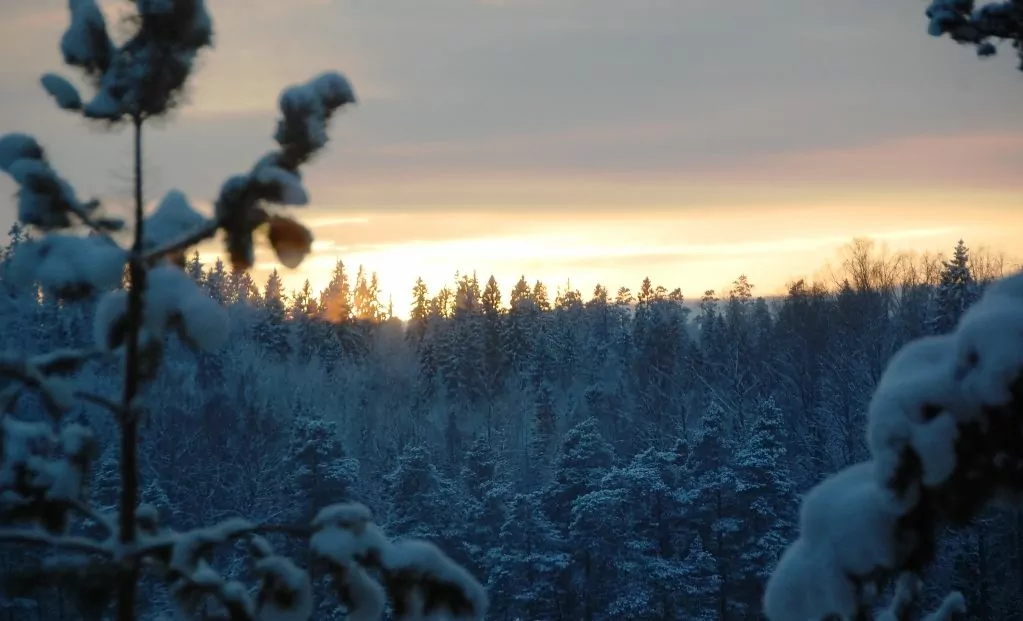
12th century - to the memory of jesus
We get Christianised in Sweden and then it's time to make us give up our pagan traditions. Nobody wants to stop celebrating "jól", of course, but by claiming that Jesus was born on 25 December, you can persuade people to continue celebrating as usual - but now in memory of Jesus' birth.
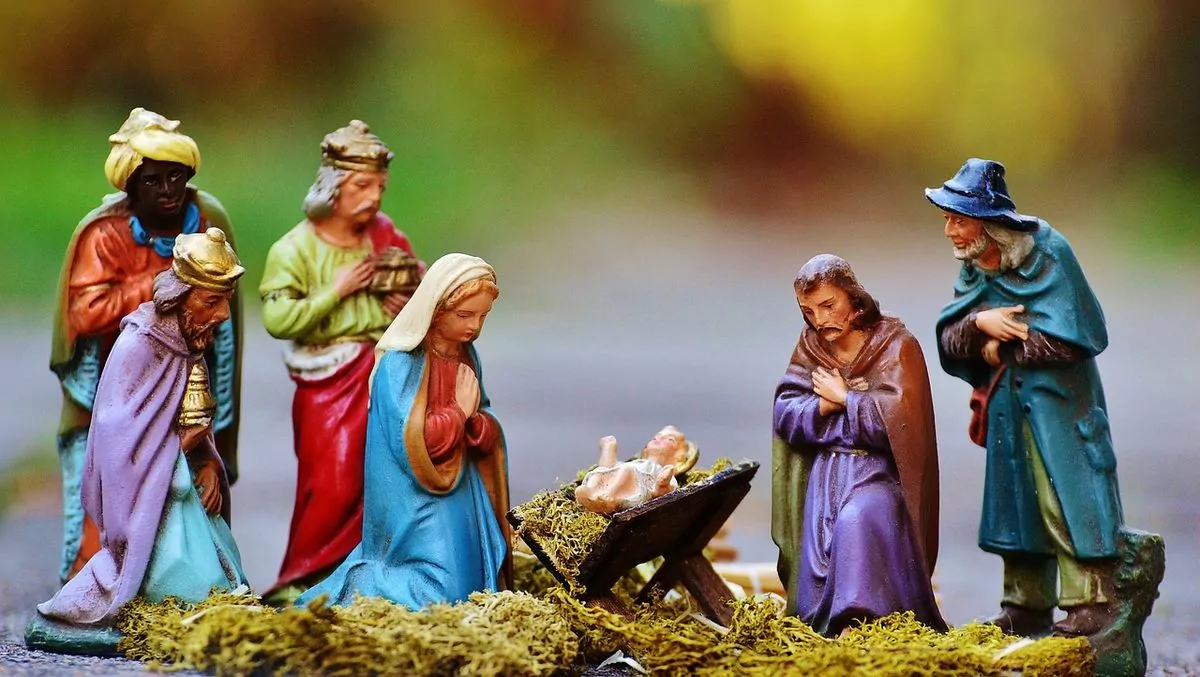
17th century - Christmas presents
We start handing out Christmas presents. The person who wants to give a gift sneaks up to the recipient's door, knocks loudly on the door, throws the gift and runs away. And yes, that's why it's called a Christmas present!
18th century - Christmas tree and buck
The Christmas tree comes to Sweden, and is initially a tradition among "noble" families. Only at the end of the 19th century did it become a general custom. We import this tradition from the Germans, who started bringing in and decorating trees a few hundred years earlier. Now we also find out that the Christmas goat, the companion of St Nicholas, can be the one who distributes the Christmas presents.
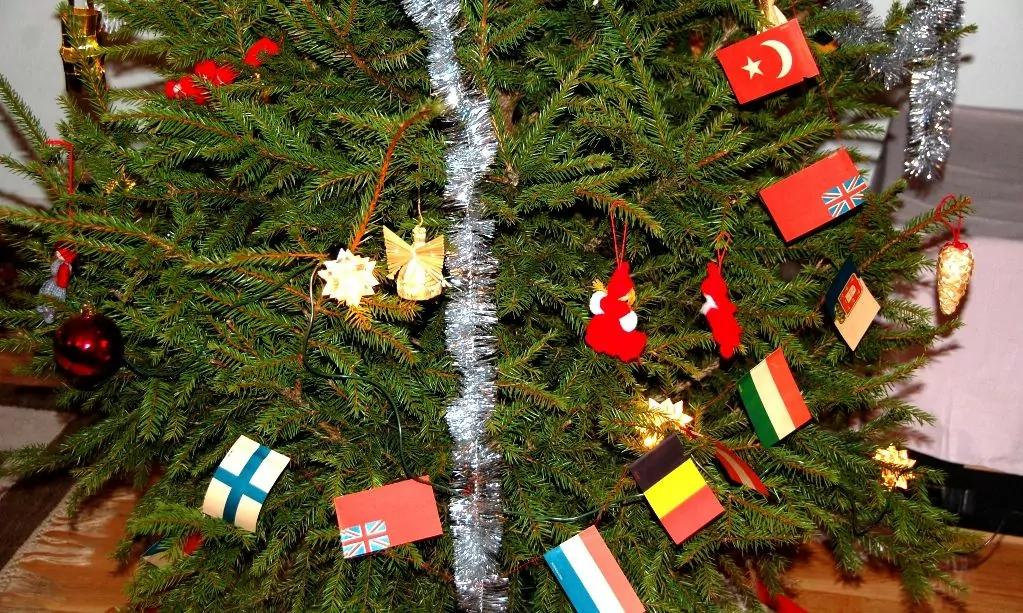
19th century - Advent tree and Santa Claus
The predecessor of the Advent candlestick is an Advent tree and, like much of our Swedish Christmas celebrations, it also comes from Germany. At the end of the 19th century, the Christmas goat is replaced by Santa Claus, who at this time looks more like a small 'farm gnome'.
1900s - Donald Duck
The Advent tree is now replaced by an Advent candlestick with four candles, and in 1934 Oskar Andersson of Sweden produces the world's first electric Advent candlestick. Santa Claus also began to look more and more like the large white-bearded Santa we see today, which was popularised by American Coca Cola advertising in the 1930s. In 1960, 'Donald Duck and his friends' began to be broadcast on Christmas Eve and in 1961 the first Advent calendar was shown on TV.
21st century - How are our Christmas traditions changing?
Yes, how are traditions changing now? What differences do you see in Christmas celebrations today compared to when you were growing up? What do you think will be the main ingredients of Christmas in the 21st century?
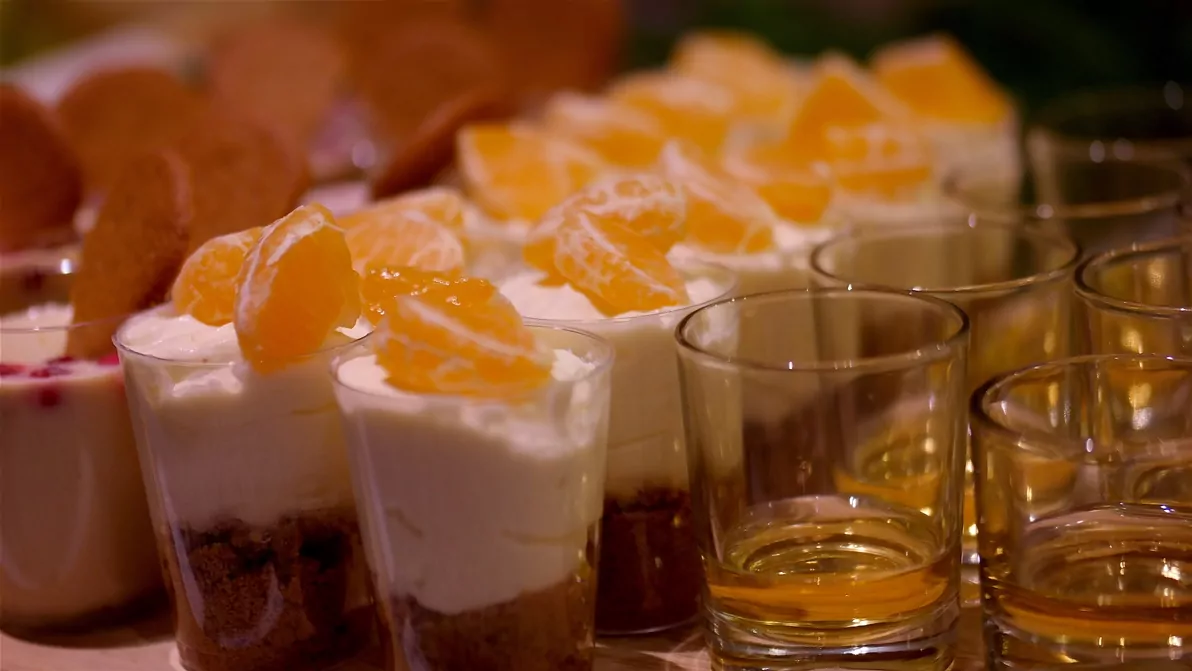
To write this post on Christmas traditions, I have drawn information from several sources, including Wikipedia, World History, Metro and the blog Holidays.


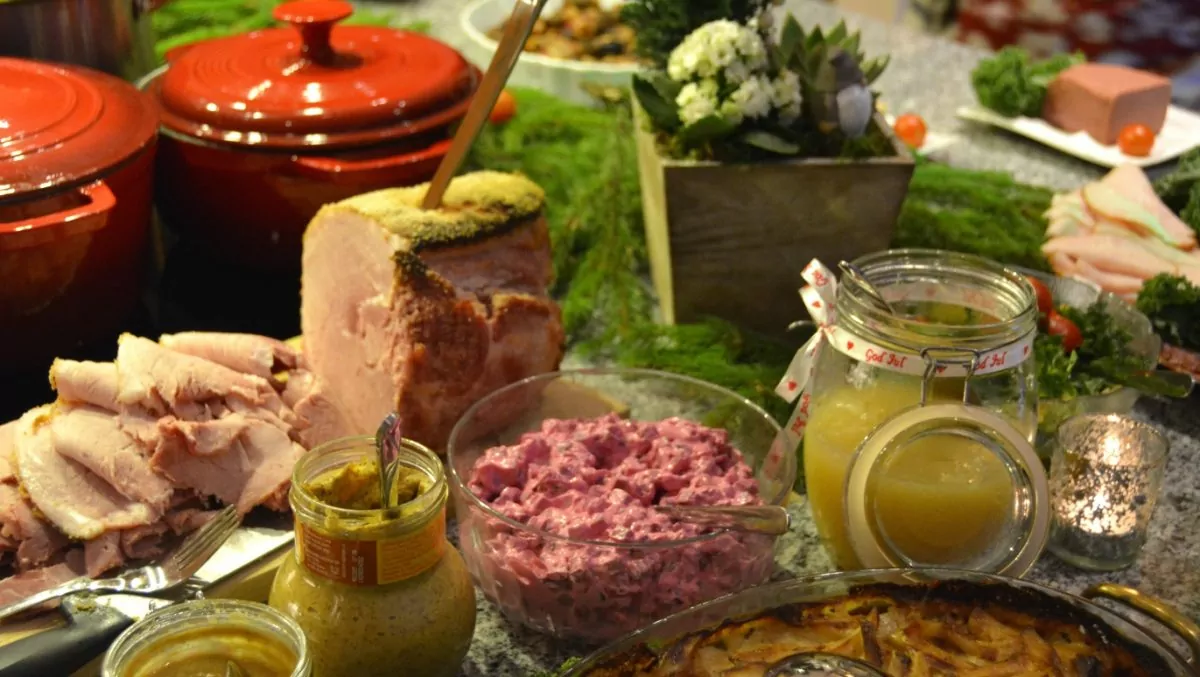






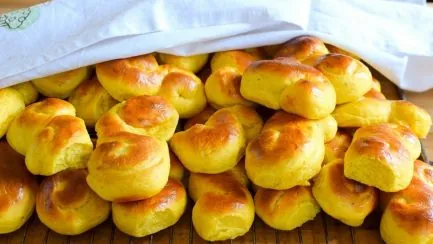
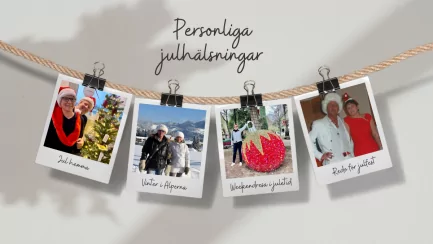
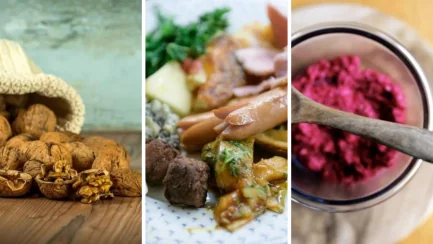



Lena - good for the soul says:
How exciting! Some news for me there. I think the most important ingredients of the 21st century will be something along the lines of vegetarianism.
Hug Lena
21 December 2017 - 6:19
Helena says:
Vegetarian on the Christmas table feels trendy, I agree! Not only for vegetarians, but also for others who want to mix up the meat a bit 😉.
21 December 2017 - 18:37
Britt-Marie Lundgren says:
I think Christmas will be easier and the food will be fresher, more vegan. Then I hope the mountain of Christmas presents will be reduced and that we might think about those who are not as well off as we are.
I think my children with families have a much more relaxed approach to Christmas than I did when they were growing up.
21 December 2017 - 6:34
Helena says:
I also hope that the mountain of Christmas presents will decrease. It's crazy how much stuff we buy in general. I think and hope that the relaxed thing is true, that not everything has to be "perfect" 😉.
21 December 2017 - 18:39
Marina says:
Isn't "traditional history" wonderful! I join those who believe that Christmas will somehow become less and less hysterical. Consumption will be viewed differently, eating habits will change, cultures and traditions will mix... even the watching of Donald Duck will diminish as the generation that absolutely has to sit in front of the TV at 3pm (in other words, us) dies out 😉.
21 December 2017 - 9:05
Helena says:
That sounds reasonable Marina! I also think that eating habits change. Maybe people keep their favourites on the Christmas table and add other things. And I think just like you when it comes to Kalla Anka 😉.
21 December 2017 - 18:40
Ditte says:
It's nice to have a rehearsal and some of it was new to me. We now have no direct traditions but have basically left them behind. Most of the time we are now abroad for Christmas and then there is a completely different relationship with Christmas. This year we are in Spain and here everything is very relaxed. No hustle and bustle in the shops or streets. I'm not particularly fond of Christmas food, never have been, and it's similar to what we eat for all holidays or otherwise in Sweden. Maybe not the lutefisk then.
I think people now eat their favourite things for Christmas and skip the rest.
When I was growing up, there were many traditions and I carried them forward. At least some of them. Nice in itself. But now I have no need for them.
21 December 2017 - 9:27
Helena says:
You really have a relaxed relationship with Christmas Ditte! We're not tradition-bound at all either. I can like certain things on the Christmas table. We probably do as you say. We choose what we like. If we're abroad, there might not be any Christmas food at all.
21 December 2017 - 18:42
Eva says:
Thank you for sharing a fun & interesting story about Christmas 🙂 think it will be more and more that everyone creates their own 🙂 have a nice day.
21 December 2017 - 9:47
Helena says:
Maybe it becomes more and more individual! Wishing you also a nice day, and a nice Christmas holiday Eva!
21 December 2017 - 18:44
Role o Carina says:
That was quite an account of Christmas!
Merry Christmas on your.........
21 December 2017 - 10:17
Helena says:
We also wish you a Merry Christmas, Rolle and Carina!!!
21 December 2017 - 18:44
Ama de casa says:
Interesting reading! It was especially fun to get the answer to why it's called Christmas gift (not that I really wondered before, just accepted that it's called that 😉 ). It may also explain why I never get a Christmas gift nowadays - it's all the fault of the door phone! 😀
One change that I think is coming is that Kalle will disappear as a "must" on Christmas Eve. A number of years ago we celebrated in Sweden with many adults and a bunch of children. They were the ones in my generation who were interested in Kalle. Today's children see cartoons almost every day. "Real" cartoon film for me was once a year - Christmas Eve. Otherwise, it was like Pellepennan and Suddagumman (which I liked in itself) and Staffan Westerberg who "entertained" the children about half an hour a day 🙂.
21 December 2017 - 10:23
Helena says:
Haha, yes, today's children are probably wondering why you should watch a particularly bad and old cartoon film on this particular day 😉 If they even know about Donald Duck... It was different when I was little! Next to the Christmas presents, Donald Duck was the highlight 😉.
21 December 2017 - 18:45
Nils-Åke says:
The Christmas celebration this year will be a cosy Christmas table at his son's house. And we have our own accommodation with us. Looking forward to a nice Christmas holiday
21 December 2017 - 10:31
Helena says:
It sounds like you have a nice Christmas ahead of you Nils-Åke! 🙂
21 December 2017 - 18:46
Lisa in the village says:
Interesting reading, some of which was new to me.
We have some traditions here at home, but change a little to suit us and our young people. The Christmas meal/table has the same menu, possibly something can be added.
21 December 2017 - 12:33
Helena says:
Fun if we could come up with something new! 🙂 When I was little I liked the Christmas traditions a lot, now that we are adults (and do not have children at home) it does not feel as important.
21 December 2017 - 18:48
Ruth in Virginia says:
Pleasant reading (and good for lazy people, who don't want to investigate themselves) 🙂 ðŸ™'
Christmas celebrations have changed. In the 1930s the tree was decorated on Christmas Eve morning.
with glitter, baubles, gingerbread and candles. Then Christmas ham and
Christmas sausages; not as many different varieties as seems to be common nowadays.
On Christmas Day everything was closed, EVERYTHING! Most people went to the Christmas party
early in the morning, whether you were churched or not. It was powerful,
when the organ roared out "Greetings, good morning ..." I almost still shudder at the thought. There were candles everywhere.
On Boxing Day, there was a lot of dancing and hippies.
I established some Swedish Christmas traditions when I had children.
Singing Christmas songs at the piano, for example, and I taught the children to dance.
"We're musicians ...", "Come, Juliet, let's go ...", and of course there were
slängrumpa through the house with "Nuerejuligen..."!
Wishing you a nice weekend. Maybe you take one of the days off;
well deserved! Hugs!
21 December 2017 - 13:41
Helena says:
How lovely to hear about your memories of Christmases past Ruth! It sounds like the real Christmas spirit with the tree and the Santa Claus. And also the carols! Now I think it seems that people bring in the tree earlier and earlier 😉 I will not take time off, but you have some red days, so there will be some time off anyway! 🙂 Wish you a really nice Christmas holiday!
21 December 2017 - 18:51
Mrs Anne says:
Interesting reading.. love history... have the best and Merry Christmas????
21 December 2017 - 19:34
Helena says:
Glad you like history too Anne! Wishing you a great Christmas!
21 December 2017 - 21:05
Matts Torebring says:
A nice flashback. Dad read the Christmas gospel on Christmas Eve evening, when the cows were fed and milked in the barnyard. For me, it's one of the most important traditions, to hold on to the evangelical part.
Looking ahead, I think the culture of Christmas food will change. From the 50s until a few years ago, everyone ate the traditional Christmas food. All of our employees are, by and large, under 45 years old. We serve a morning coffee with flavours from all over Europe. The younger ones only eat regular Swedish cheese. We've served Christmas food at the end of the year. Then the restaurant owner says: "It's no fun cooking for you, you don't eat anything". I think it's boring and I hope I'm wrong. I want to keep the old Christmas food tradition alive.
21 December 2017 - 19:50
Helena says:
Nice to hear about the Christmas gospel tradition! My parents were not Christians, at least not my dad. My mum would like to go to church once in a while 😉.
As for the food, I think that's also changing. That's part of it, of course, but I can agree that it's sad if traditions disappear too quickly. I love herring and stuff like that, but I realise that many younger people don't.
23 December 2017 - 20:01
Across the board says:
Nice compilation. I am a bit conflicted about old traditions. There used to be an excess of food and presents. I hope this will decrease, but I don't want it to disappear completely. If we have no traditions to hold on to, I think we could become rootless... I've also noticed that our "children" are very grateful for the traditions we've shared with them. They are now making it their own, with a little old and a little new 🙂.
21 December 2017 - 19:59
Helena says:
I think traditions can serve a purpose. We are not so fussy ourselves, but we don't have children at home either. I like the idea of passing on certain traditions. However, I think there is far too much consumerism, which I hope will change 🙂.
23 December 2017 - 20:03
BP says:
Here I am really impressed! I have never thought about where Christmas traditions came from. Now I know! Good research there Helena!
Agree with Ama on the word "Christmas gift", what a funny background!
I have no idea how Christmas will develop (or disappear) in the future. What I spontaneously think of is that "real" Christmas trees have been more and more replaced by plastic variants, not necessarily green.
Then the traditional Christmas food, including lutefisk, is disappearing more and more. And soon the young people will probably get bitcoins instead of regular money;-)
21 December 2017 - 20:47
Helena says:
I like "researching" history when it comes to customs and stuff, a bit nerdy I think, haha. Bitcoins! Yes, who knows ...? I've noticed there's been a bit of media coverage about bitcoins in the last few days ...!
23 December 2017 - 20:04
Liniz Travel says:
So interesting lockdown :). Merry Christmas to you and hope you get away over New Year! We looked a lot at the Alps on Christmas holidays but pig expensive..., so it was the sapphire... hugs
21 December 2017 - 22:46
Helena says:
Säfsen sounds cosy! Wishing you a really nice Christmas Lina!
23 December 2017 - 20:05
Alexandra says:
But what an exciting read, I really didn't know about all this! Some of it though 😉
I still think that we celebrate Christmas in much the same way as when I was little even if the family constellations look a little different hehe. But I also believe that Donald Duck is extinct because none of the children who are involved in our Christmas celebrations are interested in it!
When I was little, I was always pissed off because we always had a plastic tree at home and I wanted a real tree. In adulthood, I then had a real tree for a single year in my apartment.... then I understood why we never had it at home haha. So damn much needles!
21 December 2017 - 23:01
Helena says:
Haha, yes it is harder when you have to take care of the tree yourself 😉 Wishing you a really nice Christmas Alexandra!
23 December 2017 - 20:06